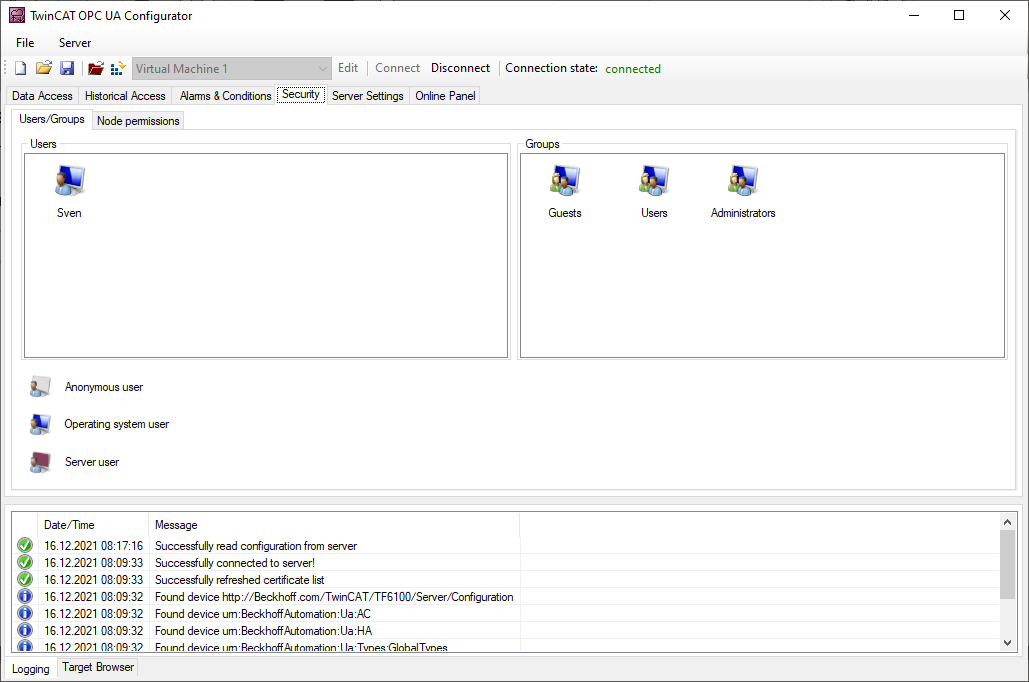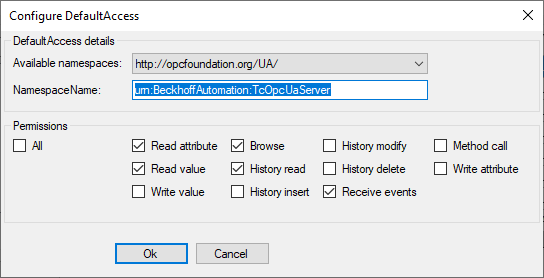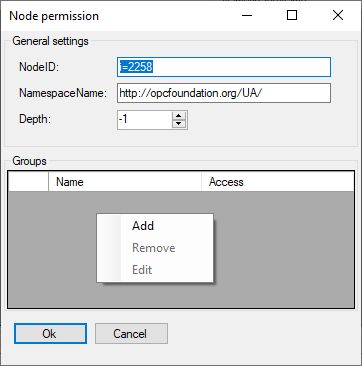Configuring security settings
Security settings can be made on the server via the Security tab. These security settings may include the following items:
- Users and groups
- Access rights for groups to namespaces
- Access rights for groups to individual nodes

Users and groups
To configure access rights, users and user groups must first be created. Some groups are already predefined when the server is delivered. New users or groups can be added to the configuration via the context menu.
A user can be either the anonymous user, an operating system user or a server user. In any case, we recommend the configuration of operating system users.
A user group can have a so-called default access configured. These are access rights to a specific namespace.
Access rights to namespaces
Access rights to certain namespaces can be defined at a user group. In the settings of the group there is a corresponding configuration area, which can be edited via the context menu.


Access rights to individual nodes
The Node permissions tab can be used to define access rights to individual nodes and their child elements. You can configure the nodes manually via the context menu or conveniently add them to the configuration by dragging and dropping them from the Target Browser, provided you are connected to a server.

The user groups and access rights of the respective group can then be defined in the node configuration dialog.

You can use the parameter Depth to set whether the permissions should be inherited by child elements. The value "-1" indicates that all child elements should inherit the permissions.